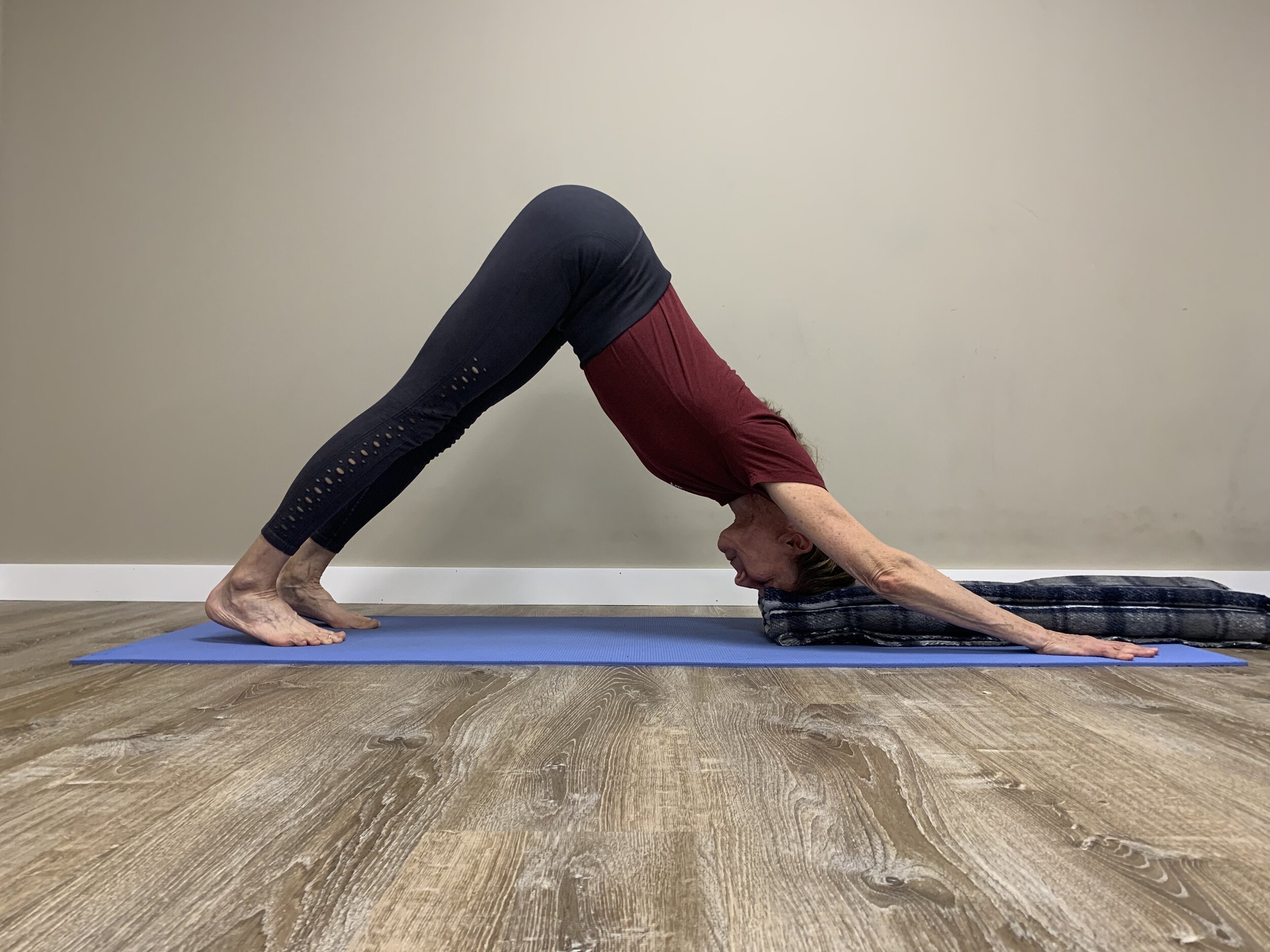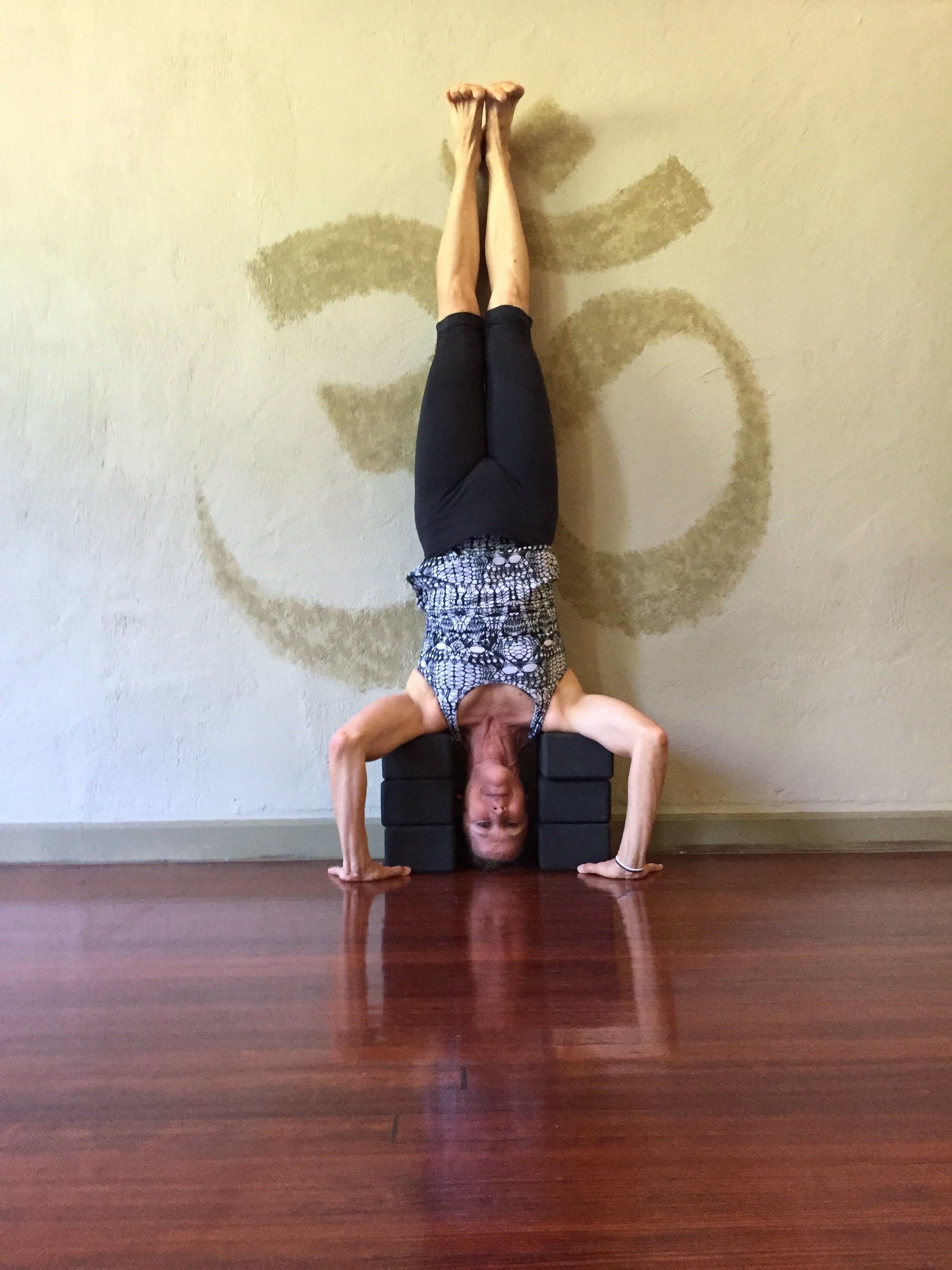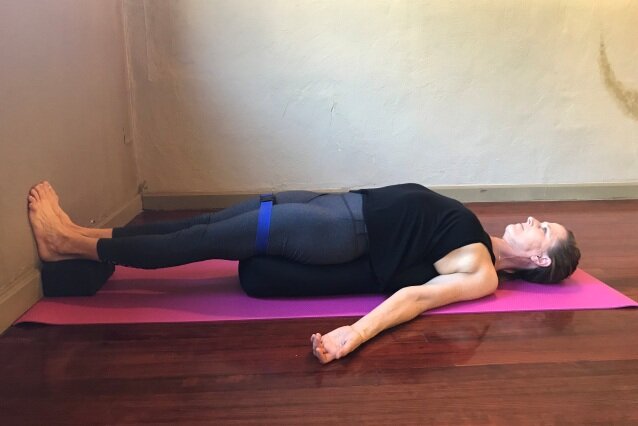In my classes, I like to include Sirsasana (Head Stand) and Sarvangasana (Shoulder Stand). I believe that they are an important part of asana practice. and here’s why:
In her book Preliminary Course, Geeta Iyengar says:
“Many a time, the practitioners do all the asanas and omit inversions, which is absolutely wrong and unpardonable! Inversions are the backbone of the practice of asanas. One may miss the other asanas due to lack of time, but should not miss the regular practice of inversions, except during menstruation, as far as women are concerned. Inversions control the metabolism of the body, keep a check on blood pressure, maintain glucose levels and chemical balance. They yield emotional balance, stimulate the intellectual center and refresh the mind.”
But what do you do if you are not ready for these poses now, or they are not ever appropriate for you?
Don’t worry, read on!
However, there are reasons that you should not do these poses: neck problems, age, osteoporosis, experience in practice, strength, confidence, eye problems, high or low blood pressure and shoulder issues just to name a few broad categories. But there are always modifications for these poses that are appropriate for different conditions.
Oh! And Child’s Pose is not the answer.
It is a pet peeve of mine that in other classes students are often told that they should just come to Child’s Pose if they can’t do the current pose the class is working on.
Child’s Pose is an alternative for Down Dog, or even Hand Stand for those who have wrist problems, because the arms are in the same position. (Provided the arms are straight and they are working!)
Child’ Pose is even a good pose to rest in after Head Stand, as you allow your blood pressure to normalize.
But Child’s Pose is not a good stand in for a lot of other poses. The modification for a pose should be similar in shape, stretch, engagement or energy level to the pose it is replacing.
I always try to teach my classes in stages so that everyone always has something to work on. And I am always glad when a practitioner knows the modification they need.
If you are in class and Head Stand comes up, here are some good alternatives:
Head Supported Uttanasana (Standing Forward Bend)
Here the head is supported on a higher height if your hamstrings are tight or you have back pain.
Here is a lower height for a more intense stretch. The height of the blocks is dependent on the practitioenr.
Head Supported Prasarita Padottanasana(Wide Legged Forward Bend)
Again, the head could be supported higher, …
- or lower.
Head Supported Adho Mukha Svanasana (Downward Facing Dog)
The height under the head could be higher if need be.
Or, there are these reclined poses:
This variation feels remarkably like Sirsasana. Does anyone remember the old yoga studio at Cornerstone in Doylestown?
Of course, there is always Ardha Sirsasana (or Dolphin). Where you never have to take you feet off of the floor…
…and Six-Block Head Stand where the weight of your body rests on your shoulders and not your neck.
If you are in class and Shoulder Stand comes up, here are some alternatives:
Setu Bandha Sarvangasana – on a bolster
Setu Bandha Sarvangasana – on a block
Viparita Karani – hips on a height.
I do not think everyone should always do inversions, but an experienced practitioner should know the appropriate modification for a pose and be able to set themselves up for that alternative.
If you need help in learning a modification for you for Sirsasana or Sarvangasana, or any pose, please contact me. I’d be happy to help.











